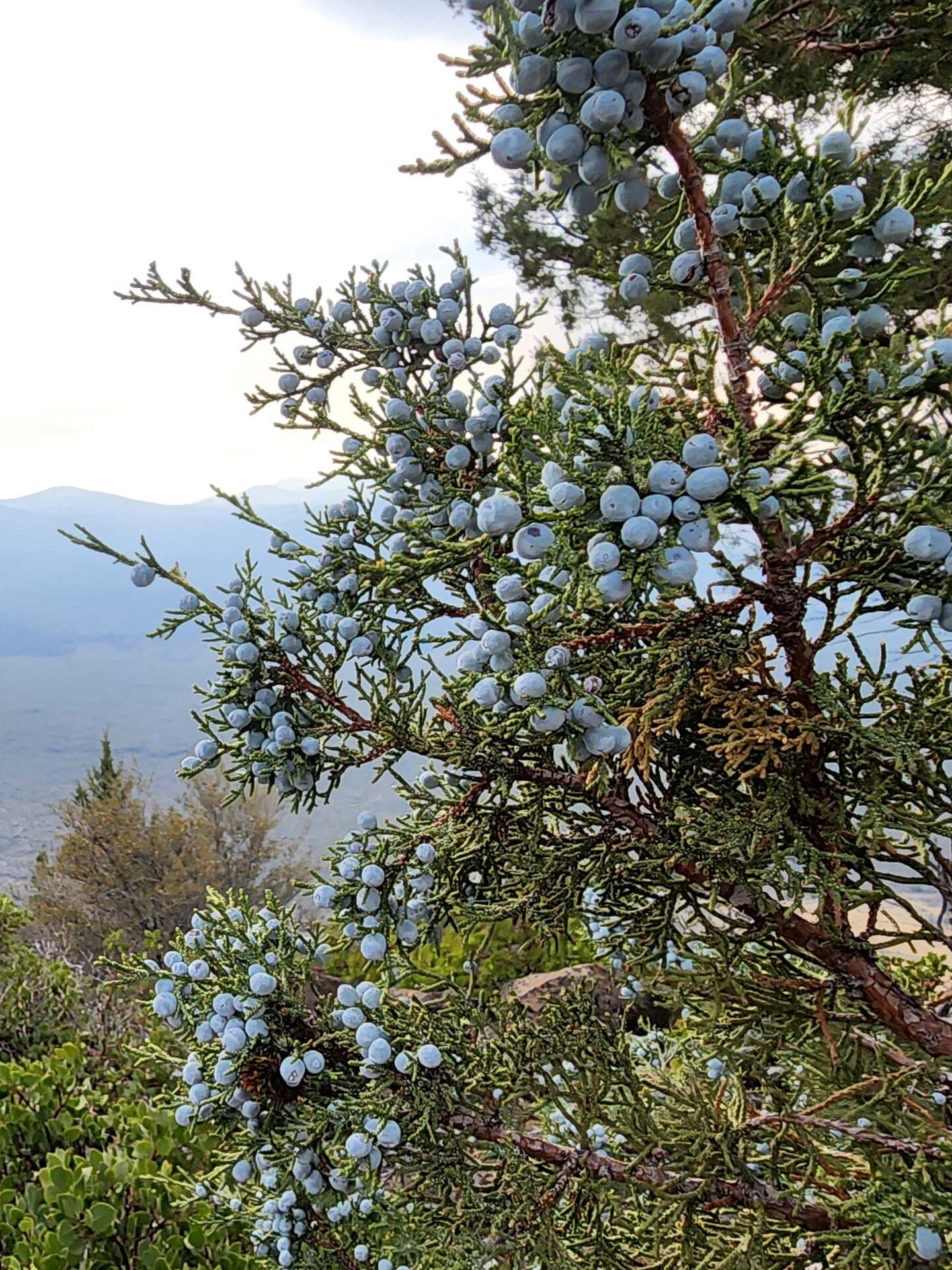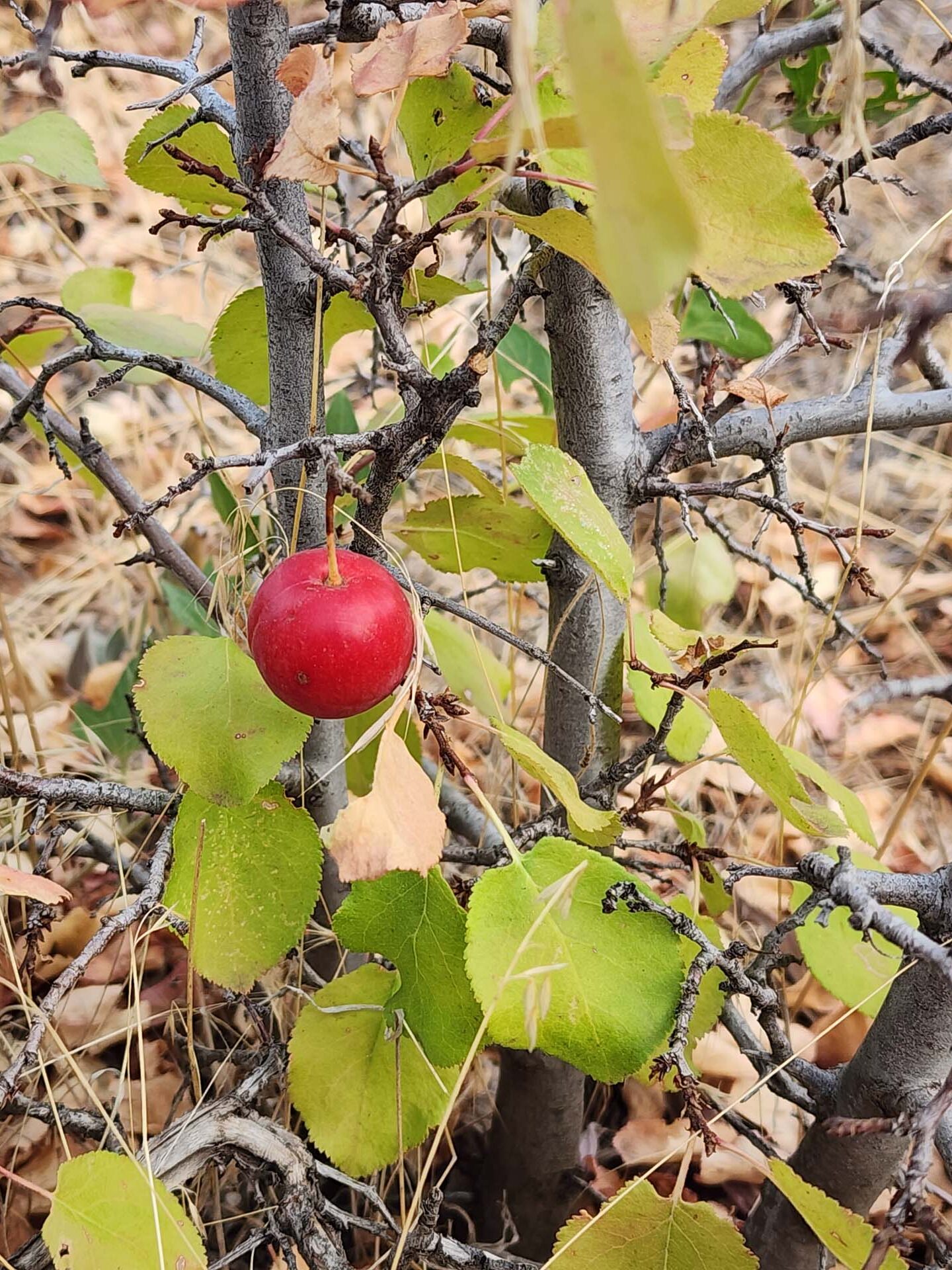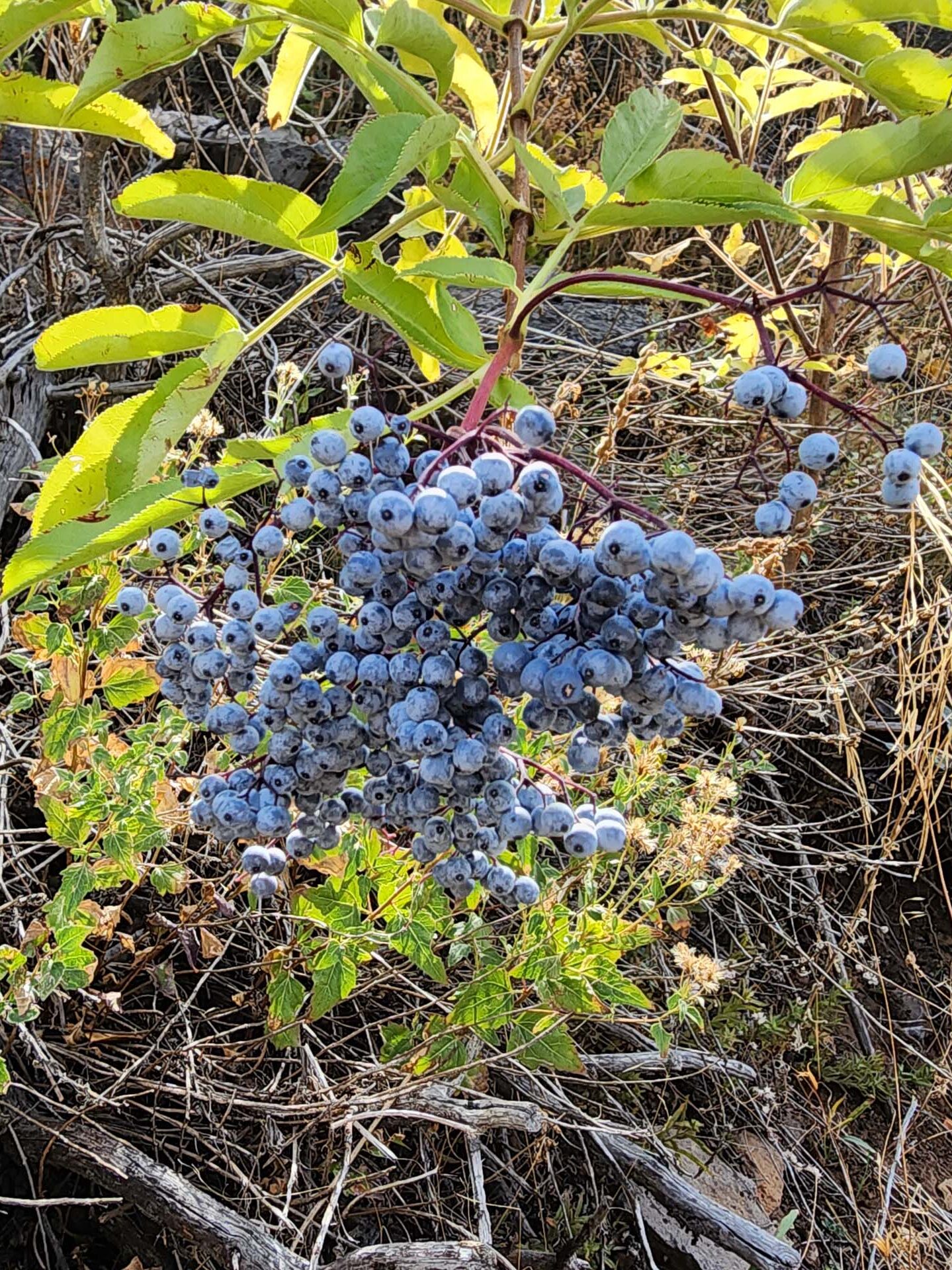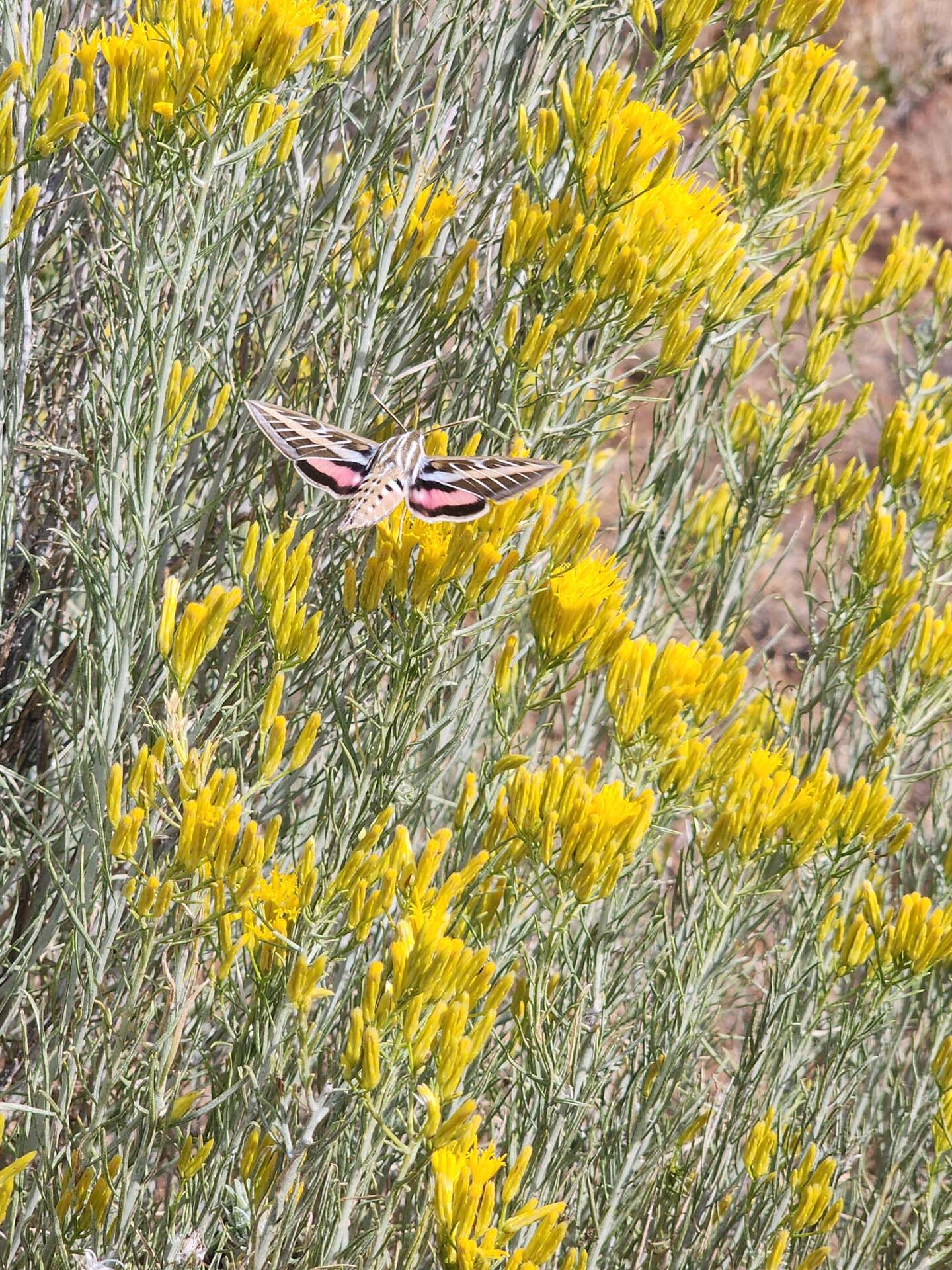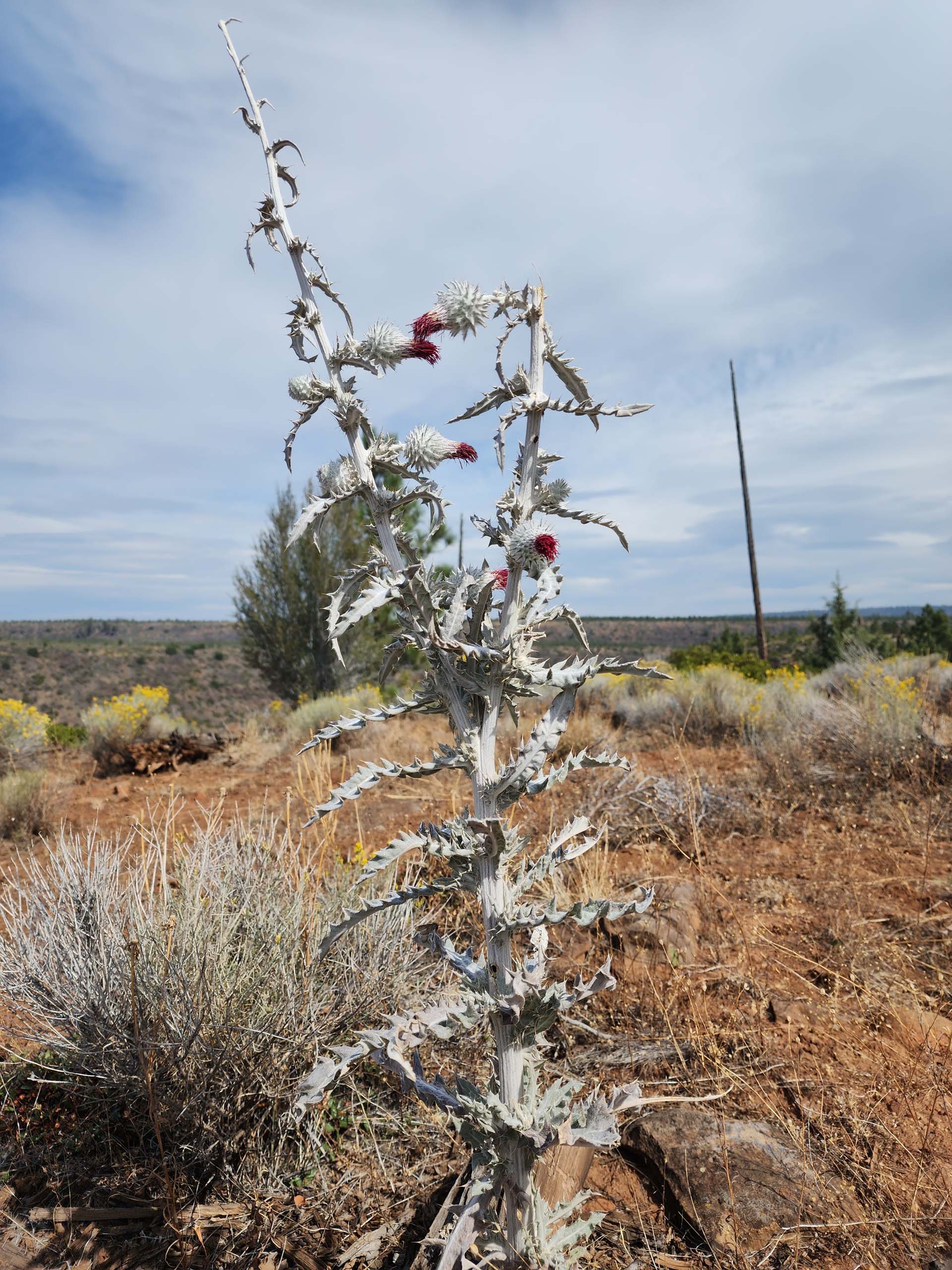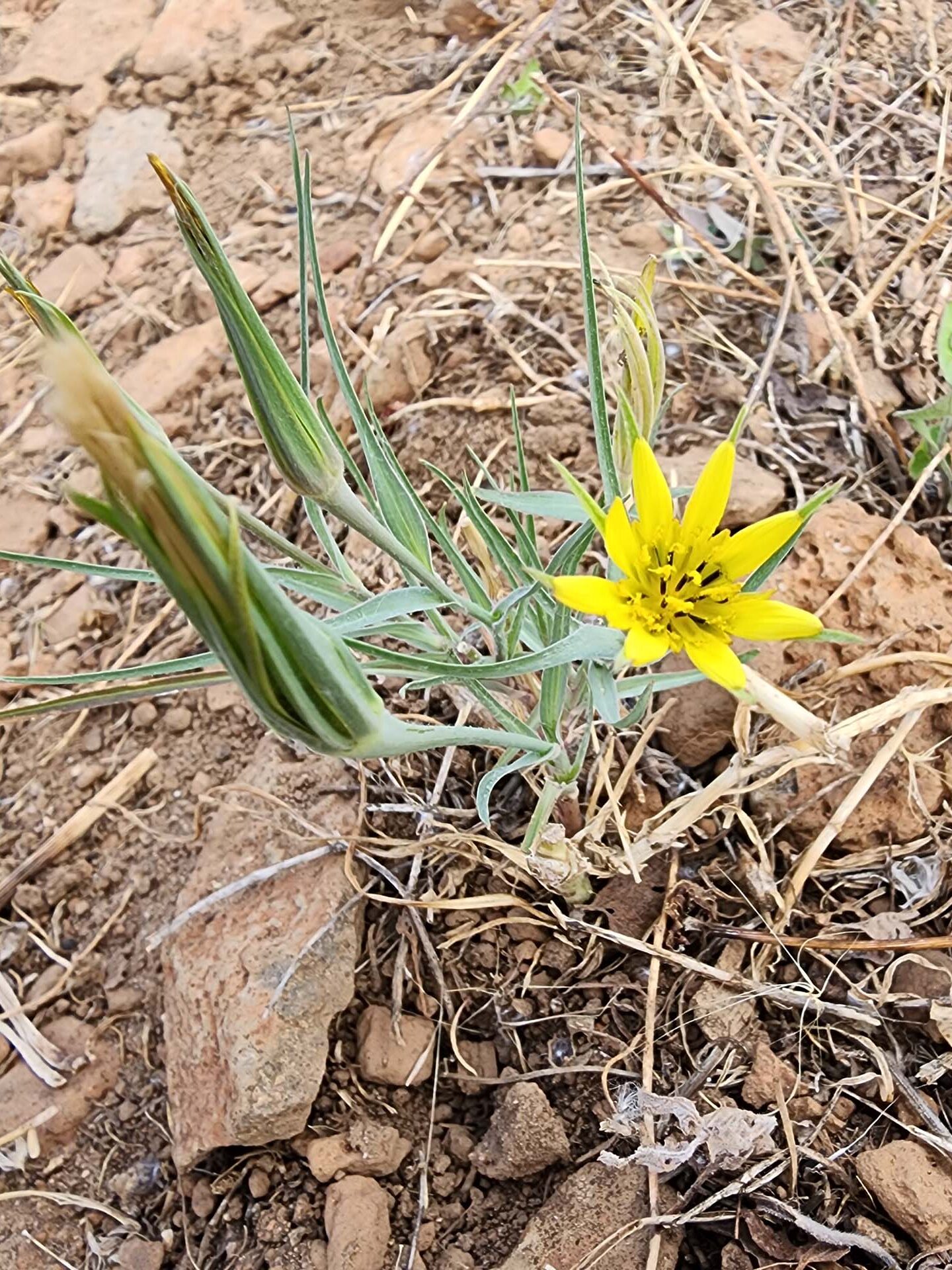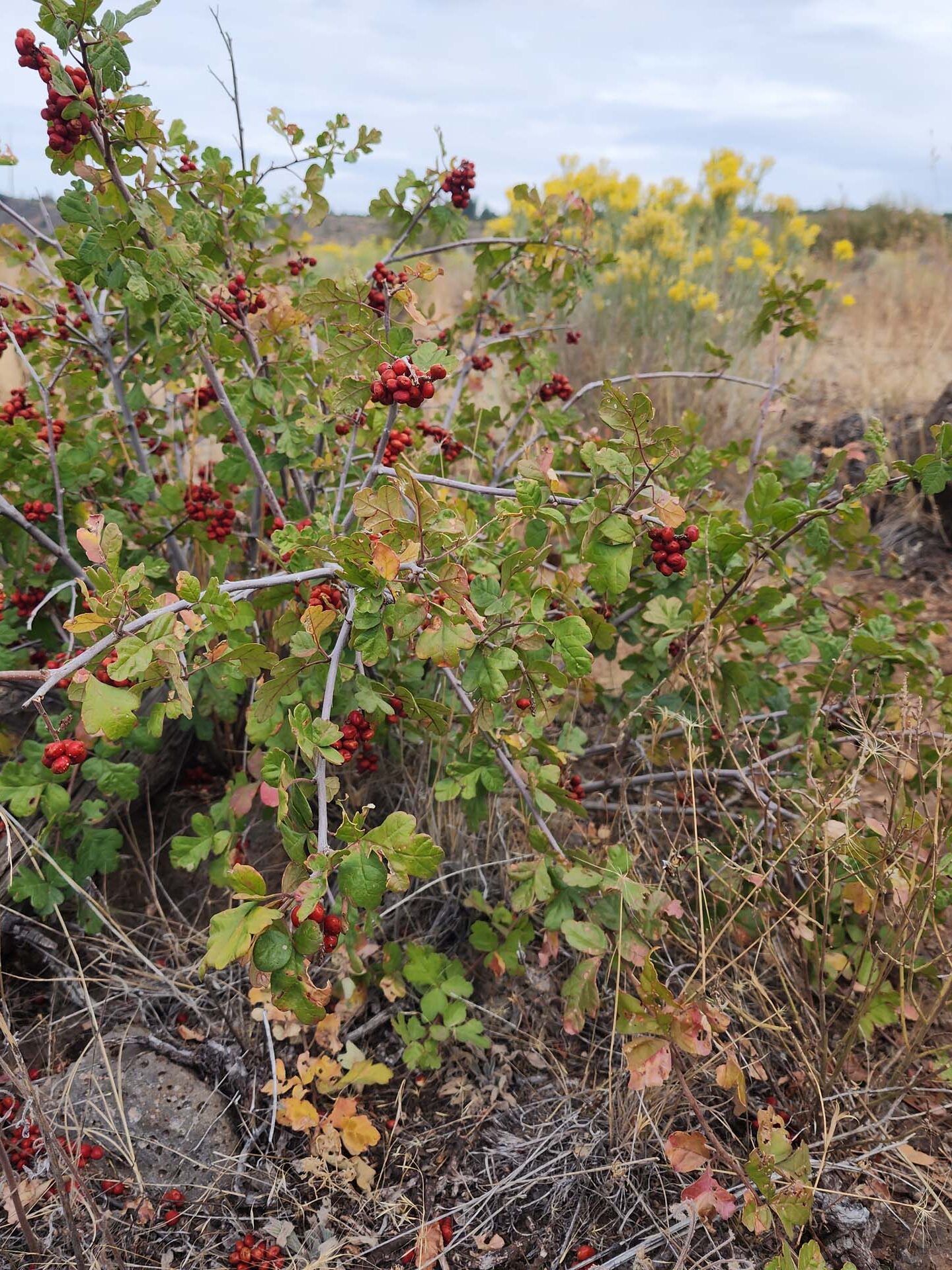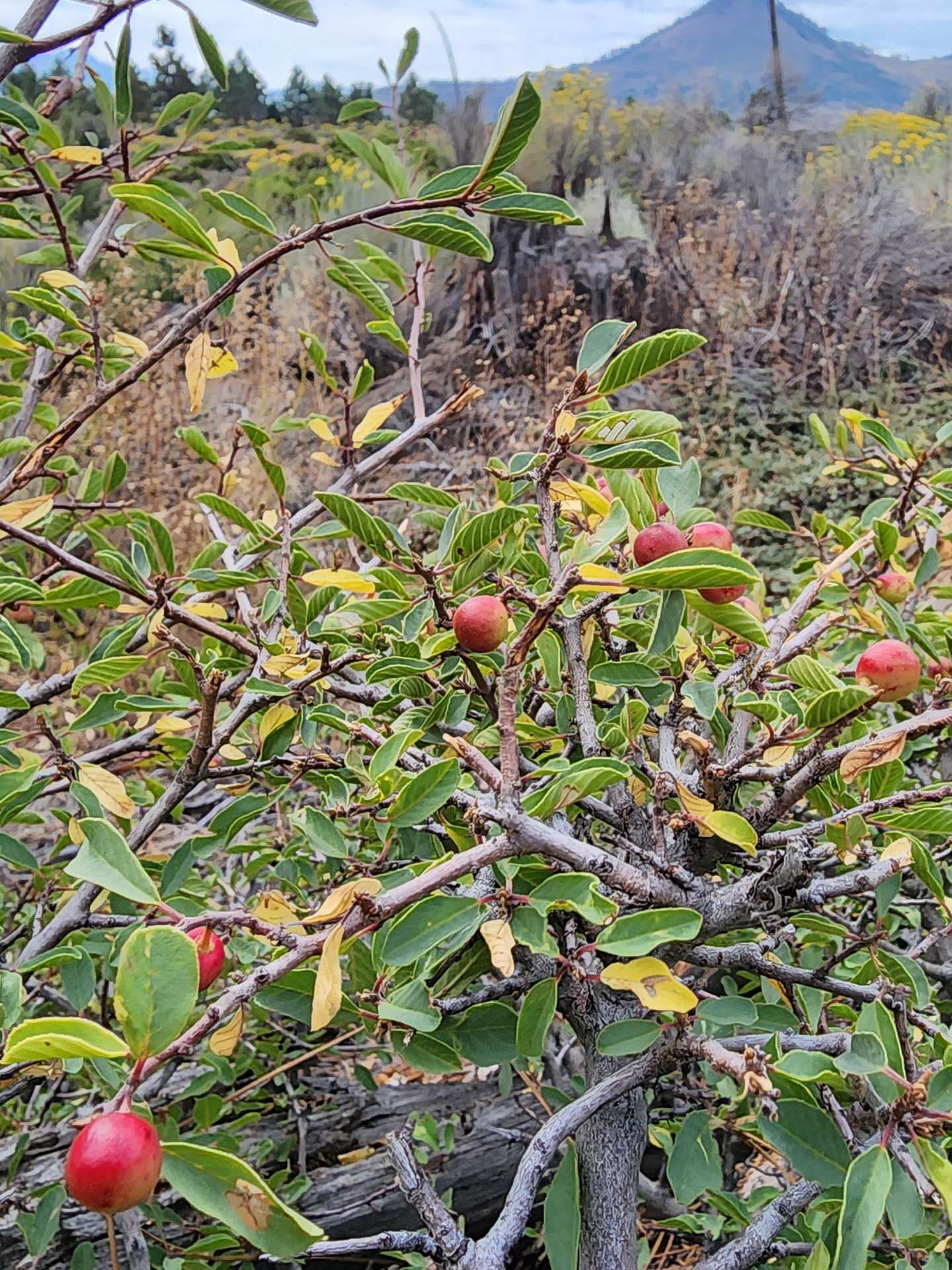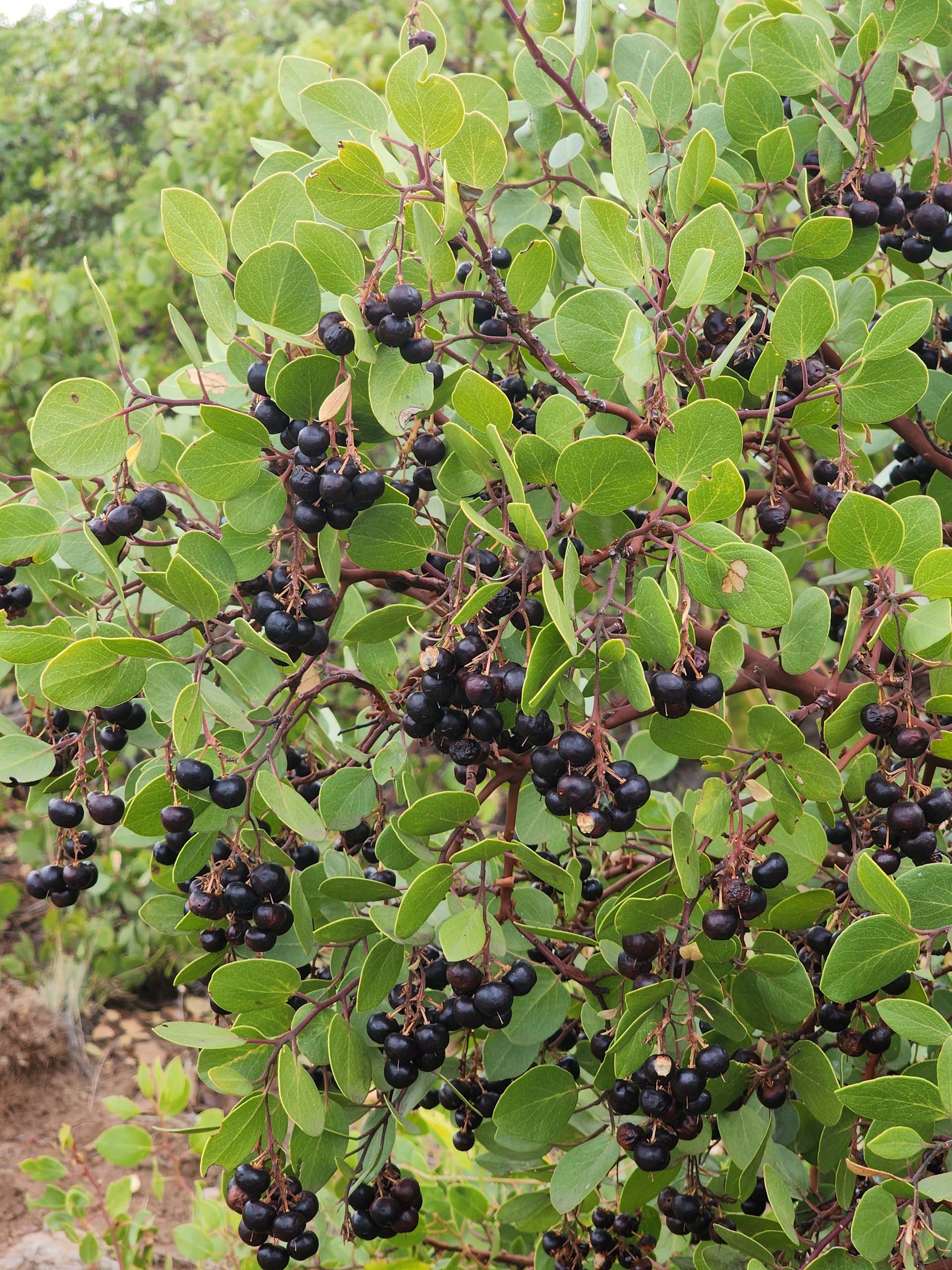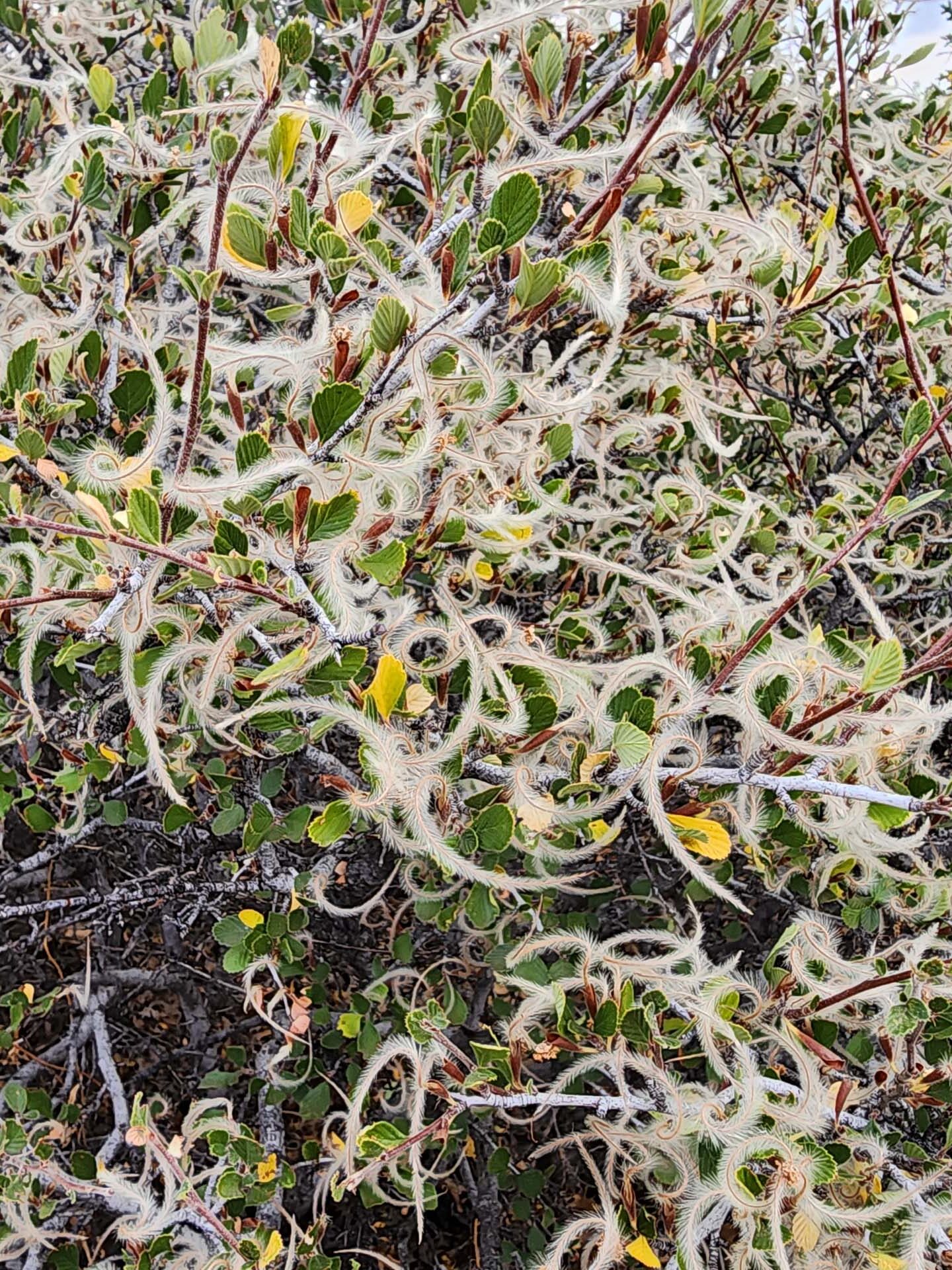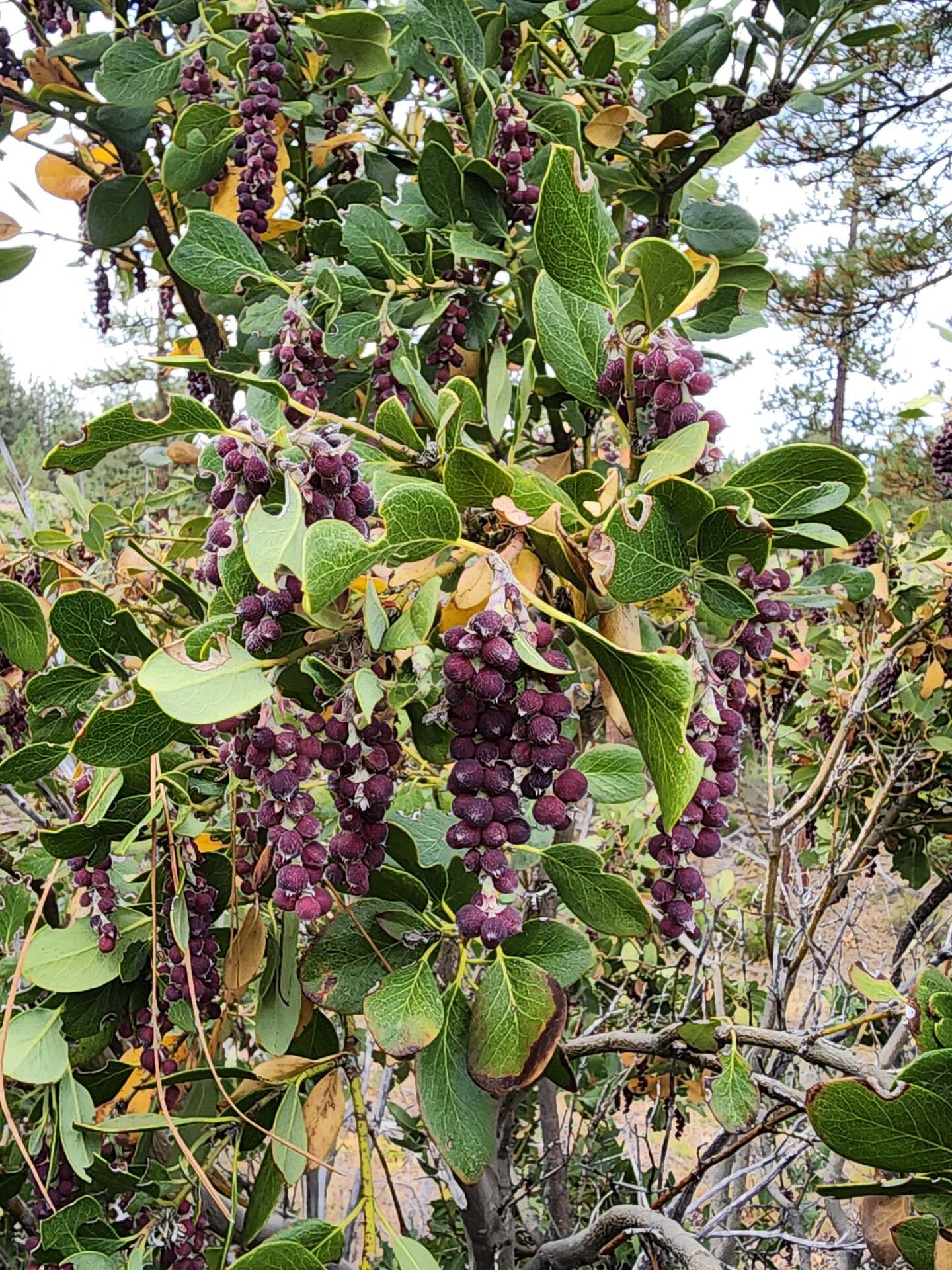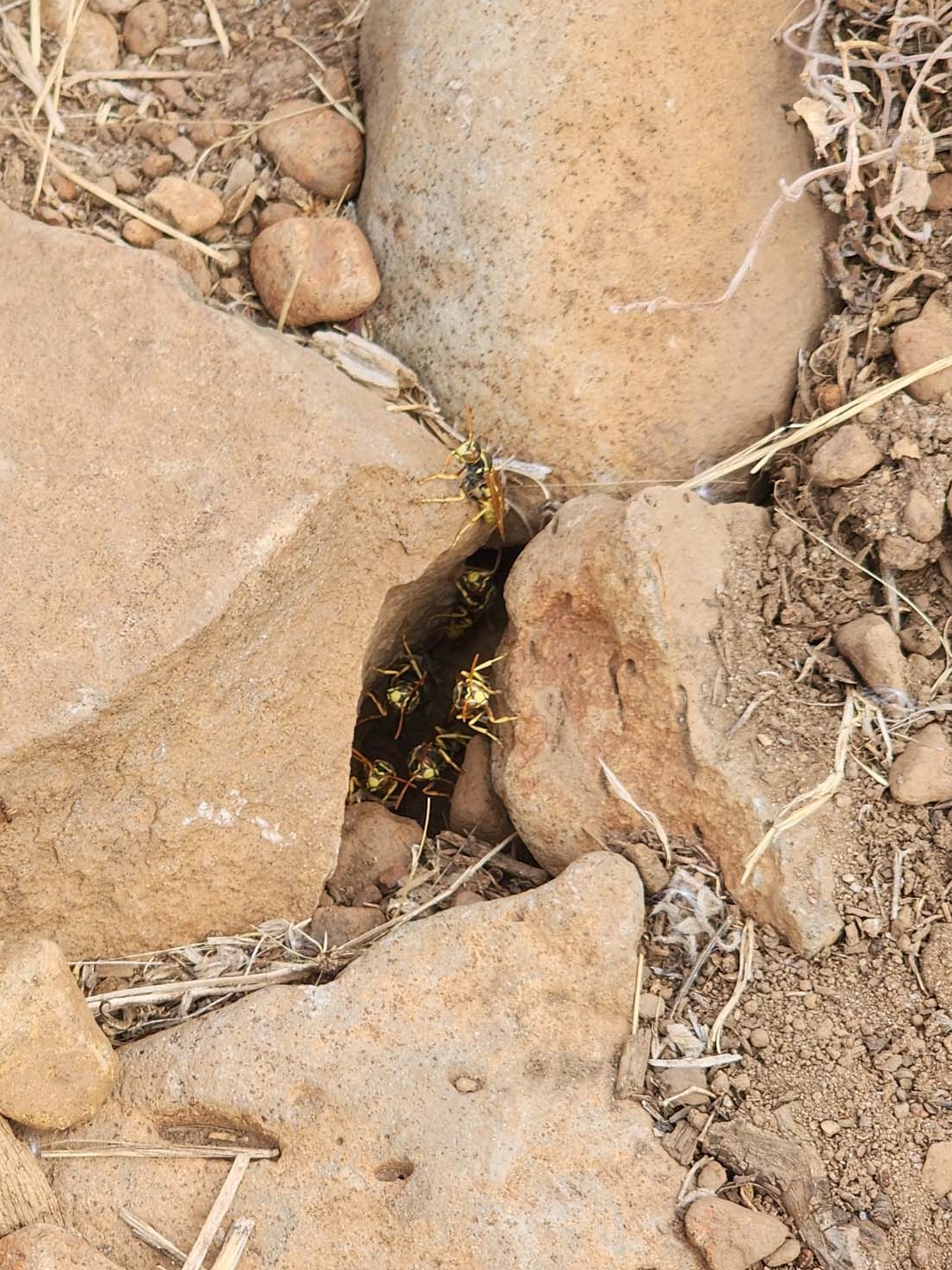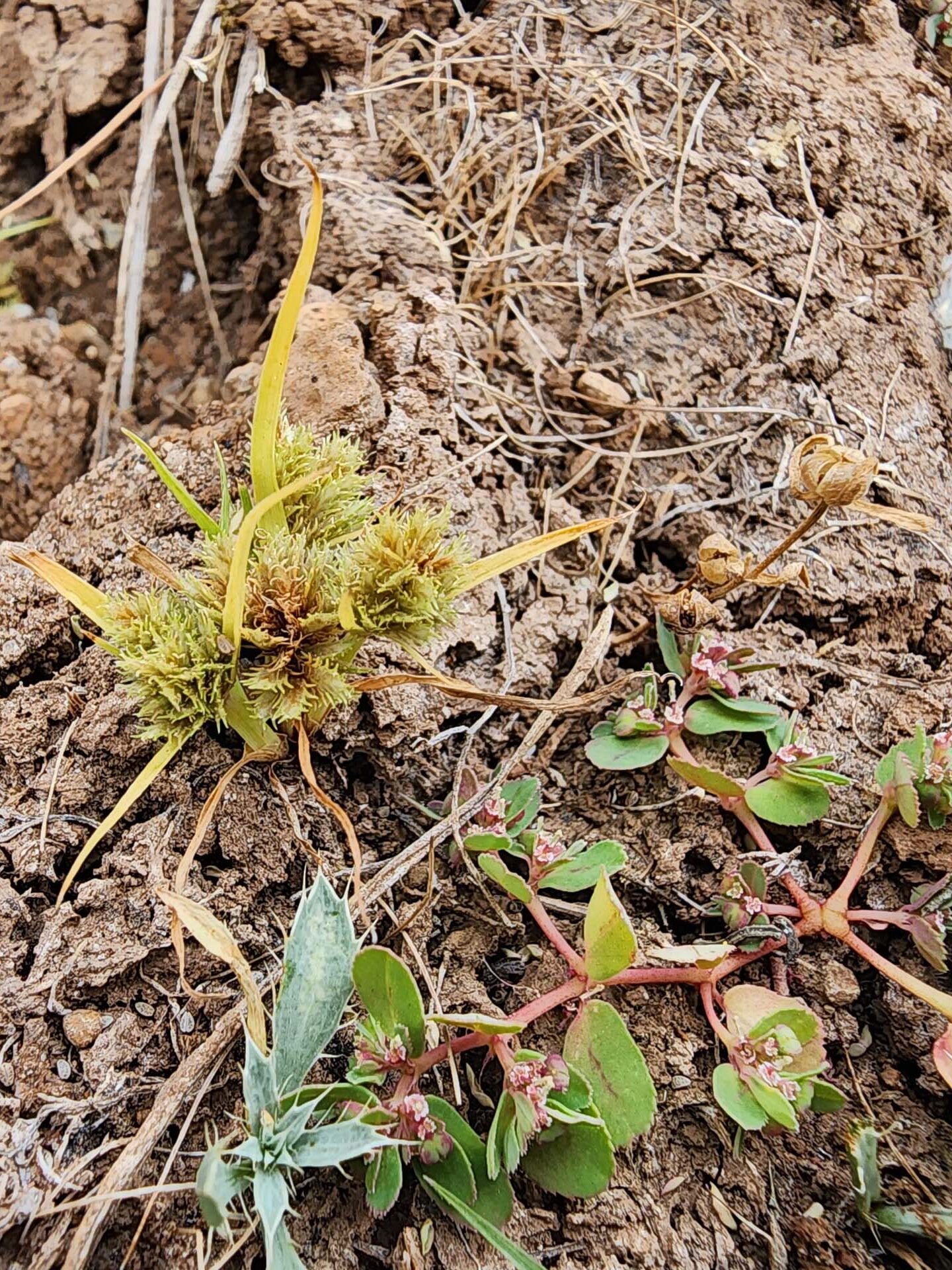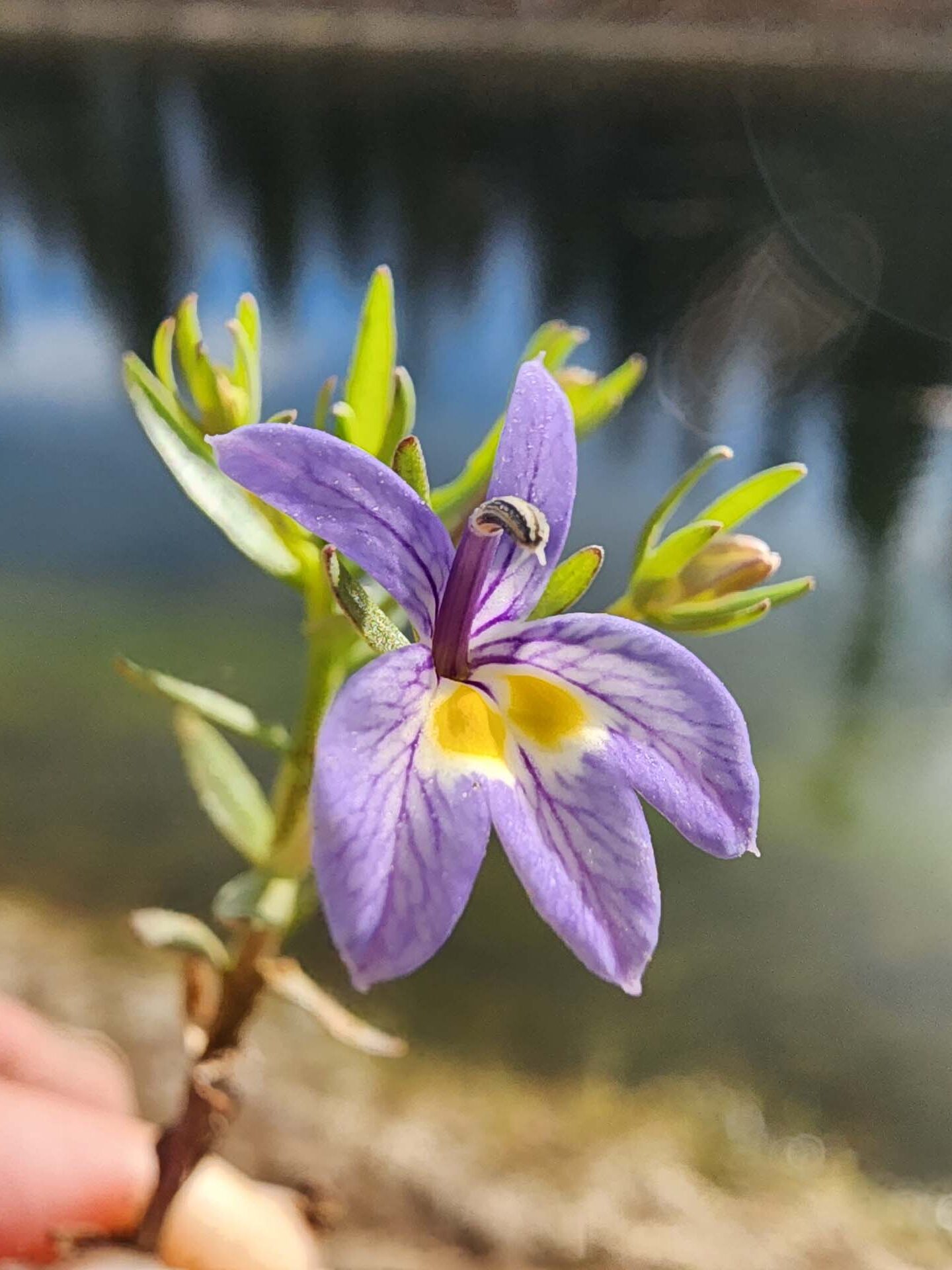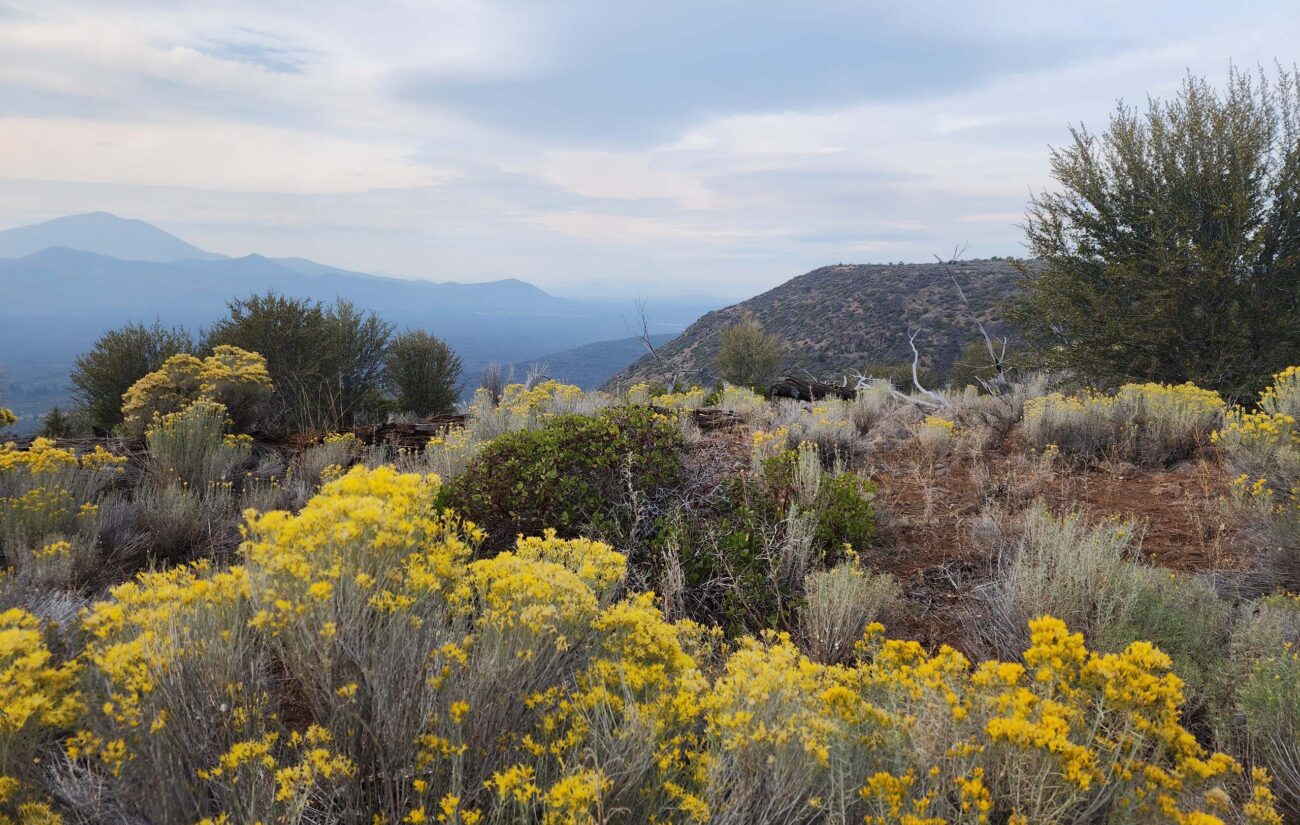
Photo taken by Don Burk on September 24, 2023.
A too busy spring left no time to hike one of our favorite trails, the Pacific Crest Trail (PCT) along the southern edge of the Hat Creek Rim, until the first few days of fall. This was the first time we’d hiked this trail in the fall and did not know what to expect, but we knew that we were well past peak bloom.
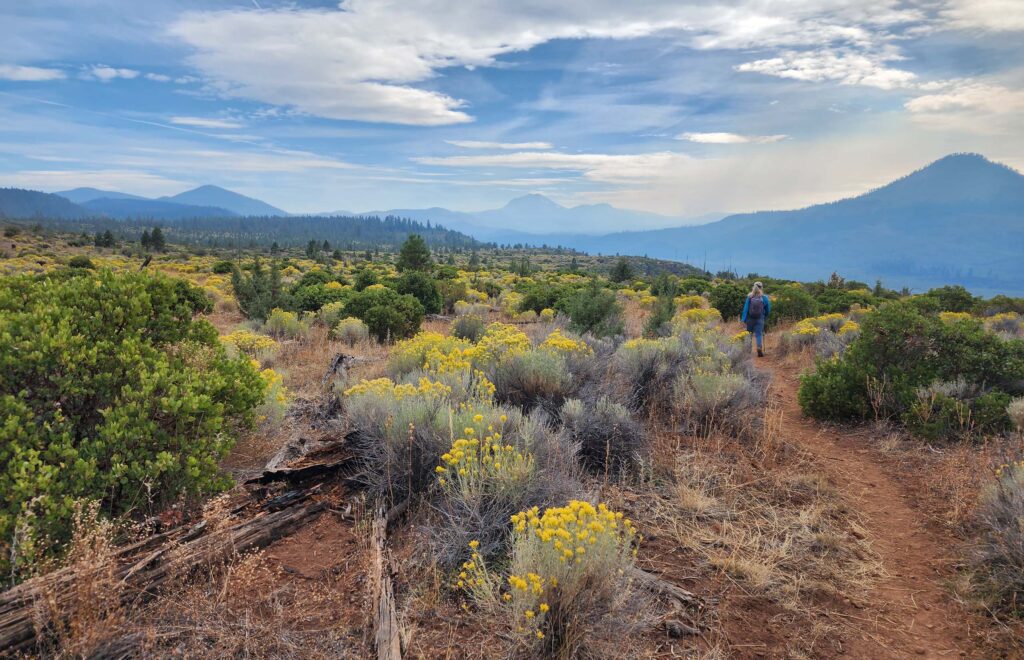
We found a landscape just as beautiful and interesting as on any spring hike—perhaps even more interesting due to the difference. Rubber rabbitbrush (Ericameria nauseosa) was in full bloom, en masse, feeding hundreds upon hundreds of busy pollinators.
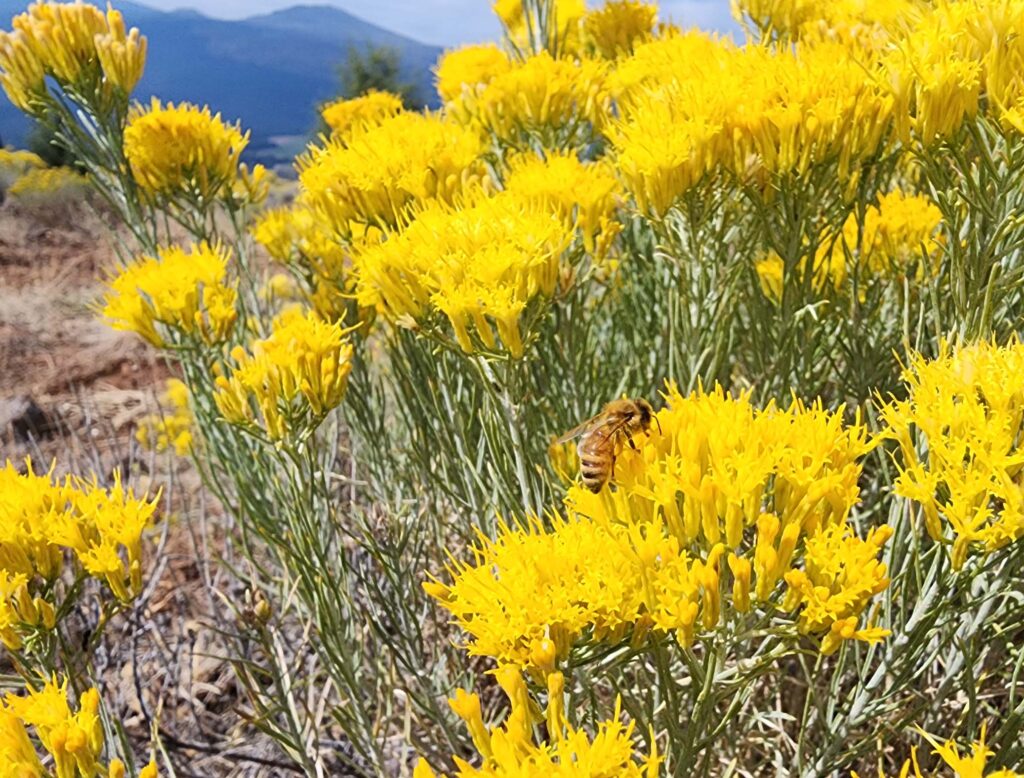
Rubber rabbitbrush was by far the most prominent species on the Rim; there were large expanses of it, dotted with young black oaks, junipers, incense-cedars, and ponderosa pines. It has been rewarding to watch the Rim revegetate over the years since the 2009 Sugarloaf Fire; the young trees are finally getting tall enough to pop above the shrub layer and become more significant features of the landscape.
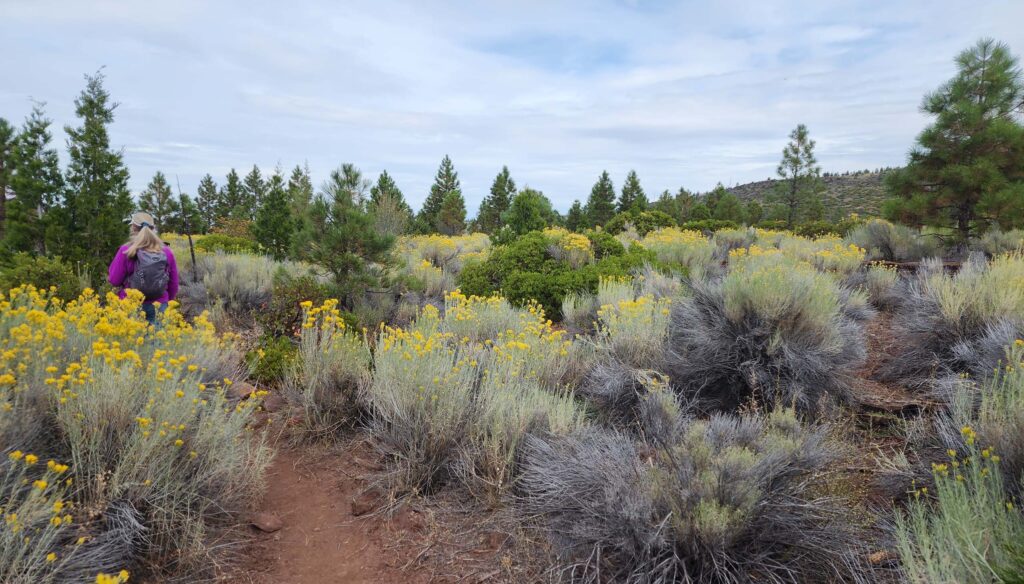
Photo taken by Don Burk, on September 24, 2023.
As we are fond of saying, botany “happens” all year long, not just in the spring. No matter the season, we will find some botanical wonder to admire when out and about, and this hike was no different. While we did count ~30 species in flower, it was the many showy fruits that took us by surprise: fleshy drupes, pithy berries, papery pods, and fuzzy achenes, to name just a few!

We highly recommend this moderately easy hike in both spring and fall (summer is too hot, with little to no shade). You’ll find beautiful vistas, moderate temps, and a wide array of plant and animal life. For a closer look at the trail itself, and to get directions to our favorite PCT section, please see our article, Hat Creek Rim PCT, June 14, 2020.
We’ll close with a slideshow of just a few of the many wonders we beheld on this hike, many of which are fruits (clues to the identity of a few of those featured in the above photo!). All photos by Don Burk. Enjoy! ~Laurie & Don Burk
Here are the answers to the fruit ID challenge, above. Note that the fruits are arranged like numbers on the face of a clock, the top being 12 (Fremont’s silk tassel, Garrya fremontii). Moving clockwise: at position 1 (western juniper, Juniperus occidentalis); 2 (western false Solomon’s-seal, Maianthemum racemosum), 3 (blue elderberry, Sambucus mexicana), 4 (Utah serviceberry, Amelanchier utahensis), 5 (Sierra gooseberry, Ribes roezlii var. roezlii), 6 (fragrant sumac, Rhus aromatica), 7 (rose, Rosa sp.), 8 (chaparral honeysuckle, Lonicera interrupta), 9 (Sierra plum, Prunus subcordata), 10 (Greenleaf manzanita, Arctostaphylos patula), 11 (round-leaved snowberry, Symphoricarpos rotundifolius var. rotundifolius), and in the center (California coffeeberry, Frangula californica ssp. californica).

